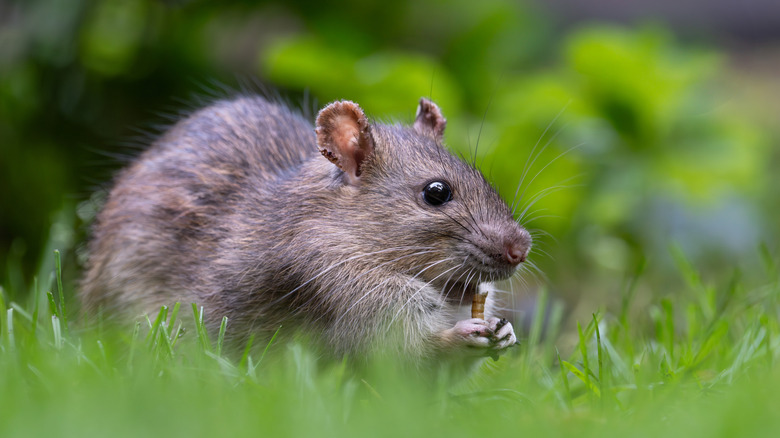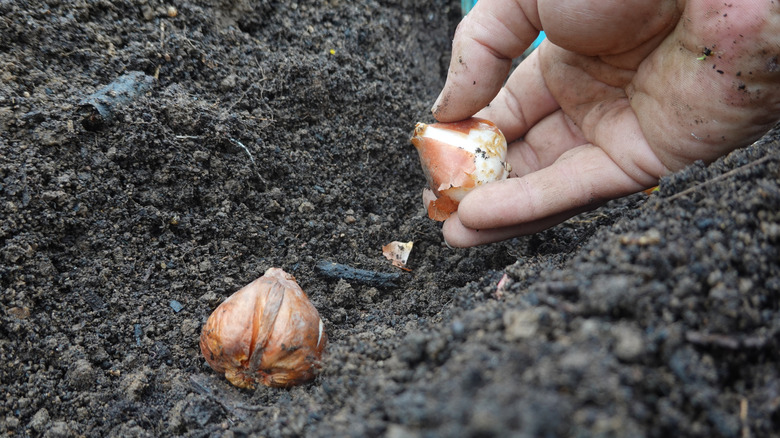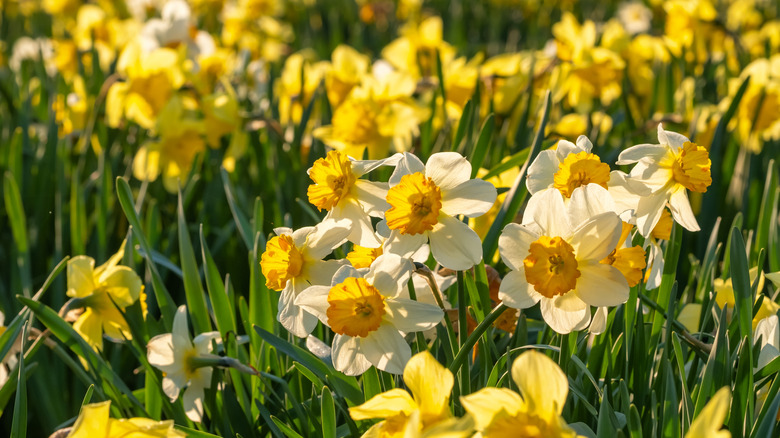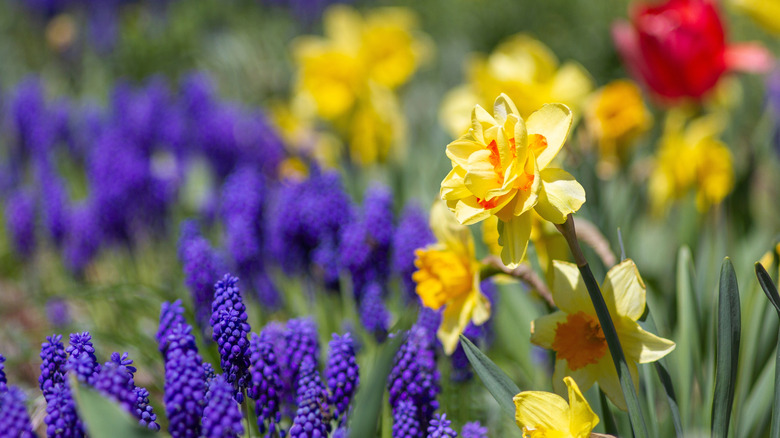The Gorgeous Flower That Doubles As A Powerful Rat Repellent
Rats can cause serious damage to property and will happily eat the produce growing in your garden. However, they tend to avoid a particular flower: daffodils (Narcissus), which makes these spring-flowering bulbs an attractive yet powerful rat repellent. These flowers work well in turning rats away due to their scent and because they contain a chemical (i.e., lycorine) that's toxic to mammals. By planting these flowers, you can naturally discourage rats from wreaking havoc in your flower beds. Plant them alongside companions that are just as unpalatable to rodents, and you give the furry pests even less of a reason to swing by your garden.
That said, while daffodils will definitely not invite rats to your yard, you must be careful when planting and caring for these bulbs. Lycorine, the toxic chemical in the plants, makes daffodils potentially unsafe if you have kids or pets. According to the American Society for the Prevention of Cruelty to Animals, the consumption of daffodils can be harmful to cats, dogs, and horses. Poison Control also warns that children should be kept away from these flowers as well.
How to plant daffodils to repel rats
If rats have been destroying your garden, daffodils can be planted in pots or in the ground nearby to offer some protection. To keep these pests away from your home, try planting daffodils beside entryways, windows, or any cracks in exterior walls. You could also grow the flowers in areas where you've previously seen rats or along the edges of your property.
Daffodils do well in sunny areas, and won't bloom if they only receive low light. When autumn begins, you can start planting your bulbs to have them sprouting by spring. These flowers do best in soil that drains well and need to have between 4 to 6 inches of space between plants. When placing bulbs in the ground, make sure there are 2 inches of space above them before covering them with soil and watering. Once the daffodil flowers start to grow in the spring, you'll only need to water your plants if it hasn't rained in a couple of weeks.
Why daffodils repel to rats and other rodents
While daffodils are gorgeous flowers that smell lovely to humans, rodents don't enjoy the scent. Further, these flowers, as mentioned, also contain lycorine, an alkaloid, which is poisonous. This chemical is known to deter mice, rabbits, deer, squirrels, and voles, as well as rats. The flower's bulbs have the most lycorine inside them, but the chemical can be found throughout the whole plant. If an animal happens to eat daffodils, it'll likely experience gastrointestinal symptoms, such as vomiting and diarrhea, and humans have similar reactions. Additionally, these plants have oxalate crystals that are sharp and can irritate skin when touched.
For all these reasons, many animals, including rats, will avoid these perennials. If you choose to plant daffodils as a rat repellent in your garden, know that the plants do well in growing zones 3 to 8 and that their flowering season will vary by location. Depending on where you live, you could have a way to keep rats away naturally for as long as six months, or as little as six weeks. Also, note that despite their repellent properties, daffodils are often vulnerable to being dug up by the rodents. Before you grow daffodils in your garden, learn a few more must-know, expert bulb-planting tips.
Best companion plants to grow alongside daffodils to keep rats away
Rats may well detest daffodils, but it doesn't mean that they won't go after more palatable plants if you grow them nearby. In fact, they may turn their attention to these appetizing companions, since they're such an obvious and yummy alternative to the toxic daffodils. To keep rats out of your flower beds, choose daffodil companions that are equally unappealing to rodents.
A number of other spring-flowering bulbs boast rat-repellent properties, and are thus worthy additions to consider. For example, grape hyacinths (Muscari asparagaceae) have lovely, blue or purple blooms that appear in the spring, and provide a stunning contrast next to the yellow daffodils. Then there are ornamental onions (Allium), which will adorn your landscape with purple, sphere-shaped blooms in early summer, just as daffodils die down for the season. Both of these options are rat resistant, so planting them alongside daffodils should discourage the pesky rodents from visiting your garden from spring through early summer.
If you'd like to prolong the show of color in your garden, consider also growing summer-flowering plants that are likewise unpalatable to rats. These include rosemary, peppermint, lavender, and sage. Regardless of which plants you choose, complement your selective planting efforts with a more robust rat-deterrent strategy, including other humane ways to keep critters out of your yard.



